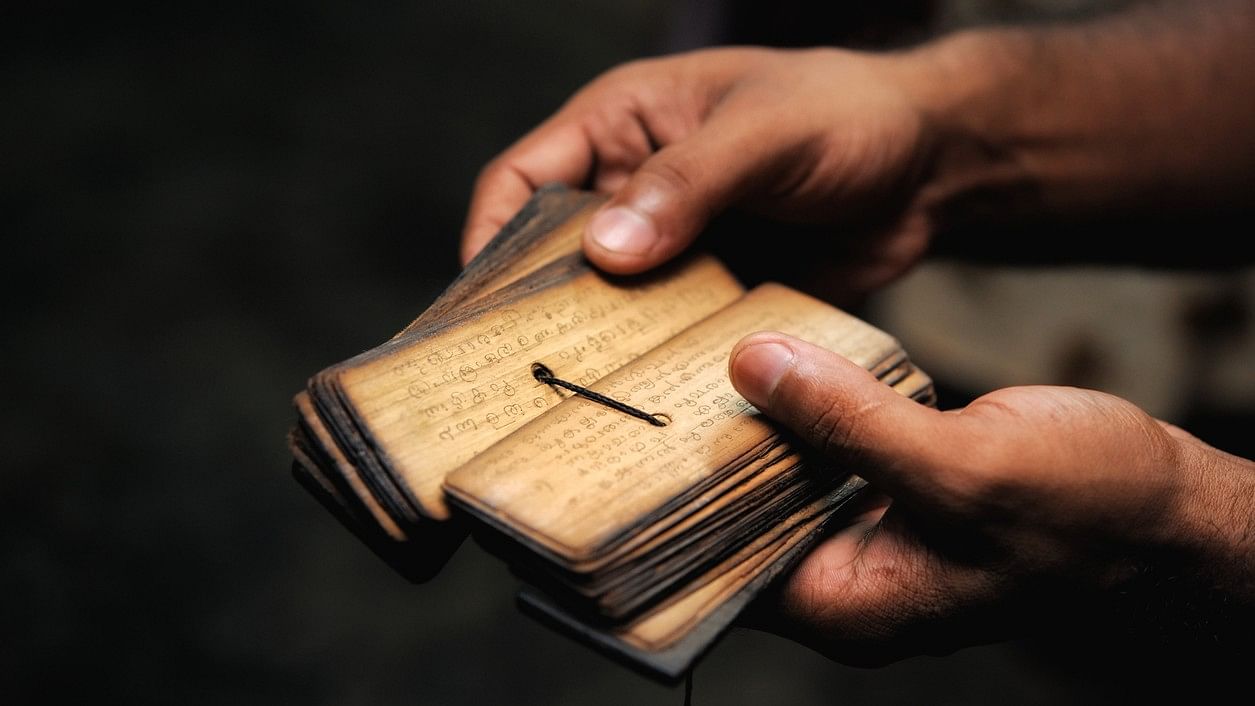
The question as to when exactly the Dravidian and Indo-Aryan came in contact may be an unresolved matter; but it is beyond doubt that a proto-Dravidian language variety had been in existence in South India, and most likely in various other parts of India as well, prior to its coming in contact with Sanskrit. This language had several features that were quite distinct from the linguistic features of the Sanskrit of the Indo-Aryan language family.
As summarised by the scholar of Dravidian linguistics, K Rangan, “The pronouns, numerals, the conjugation of verbs with tense and person, gender agreement suffixes, the conjugation of nouns with case suffixes and the arrangement of words in sentences are basic and they differ from the structure of Sanskrit and other Indo-Aryan languages.” Besides, he explains: “The negative occurs pre-verbally in Indo-Aryan languages but in Dravidian languages, it is post-verbal. The verbs in Dravidian languages are conjugated for negative voice. The absence of relative pronouns in the construction of relative clauses is a marked difference between Indo-Aryan and Dravidian languages.”
There are several other important differences between the two. Sanskrit and the early ancient Dravidian developed closer associations with other languages over time. In addition to the Dravidian languages, there also existed in India during the second millennium BCE languages of the Austro-Asiatic people, who had migrated to South Asia after the ‘Last Glacial Maximum’, around the 18th millennium BCE. They came into India in two distinct waves of migration. Till the middle of the second millennium BCE, these languages had stayed apart, with little interaction among them. The arrival of the speakers of Indo-Aryan in several waves during the second millennium BCE, after the decline of the Indus Civilisation increased the interaction and generated a new era that can be described as the ‘age of language mix’. The increased mobility and new military technology enabled the spread of the language across a vast geographical area, a phenomenon unprecedented in any of the earlier millennia.
The technology of rapid movement, which the speakers of Indo-Aryan brought with them, entailed not just a greater penetration into the Indian subcontinent; it also meant an increased ability to recall the spaces the migrants had previously inhabited. The spatial awareness of the speakers of the Indo-Aryan was essentially different from the spatial awareness of the speakers of the other languages in existence in India; it continued to remain different from the spatial awareness of the preceding waves of the indigenous peoples and the migrants to South Asia, the Iranian agrarians, the Austro-Asiatic communities, and the Dravidian inhabitants in the south.
This difference can be shown by citing side by side the numerous texts produced in Sanskrit and contemporary texts produced in one of the non-Sanskrit languages. For instance, the Brihadaranyaka Upanishad of the sixth or seventh century BCE states: “When one tears out the tree from its roots, the tree can grow no more” (verse 3:9). In essence, both the roots and the trunk hold equal significance in defining the character of a tree.
As against this, the Samyutta Nikaya (verse 15:1–2) reports that the Buddha (who belonged to the same period as the composition of the Brihadaranyaka Upanishad) had stated, “There is no first beginning, no first beginning is knowable.”
The question of ‘the first cause’ came to be of epistemic significance in the philosophies that emerged out of the language mix during the first millennium BCE. The great importance attached to the abstract notion of ‘para’, the outermost and the transcendent, in the metaphysics woven through the Upanishads and the epics composed in Sanskrit during that millennium, along with philosophies and thought streams that denied the idea of transcendent in different parts of India, form the very heart of the India constructed during the age of the language mix.
One way of grasping the precise nature of the language mix is comparative literary study; the other is the study of pottery attached to rituals. Considering that the dates for the ancient texts have, in many cases, remained not precisely determined, while the patterns and geographical locations of pottery are known with a greater certainty, an examination of the geographical locations of the exchange and transition of pottery traditions in the subcontinent provides a reliable idea of the language mix during first-millennium India.
The pottery types used by the Indo-Aryans — the painted grey ware — differed from the black and red ware used by the prehistoric speakers in East and South India. The clash and collaboration between the ideas of space that the earliest form of Sanskrit had brought with it, and those that had emerged in the agrarian as well as the nomadic communities existing in India prior to the first millennium BCE, resulted in the divergence within their respective worldviews.
The worldview that was prioritised in Sanskrit focused on the verticality of everything: The human body, the social order, the world of other animal and plant species, and the cosmos. The highest in the order was ascribed an imagined purity, the lowest, in contrast, impurity or pollution.
(The writer is chairperson, The People’s Linguistic Survey of India)